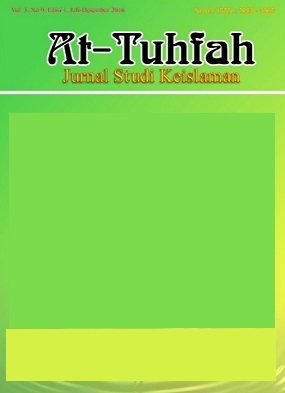Perceptions Of Brawijaya University Students PSDKU Kediri Towards Early Marriage
 PDF Download: 123
PDF Download: 123
DOI:
https://doi.org/10.32665/attuhfah.v13i2.1619Keywords:
Perceptions, Of Brawijaya University Students, PSDKU Kediri Towards Early Marriage,Abstract
The term early marriage is a relatively modern term. Early is usually related to time, meaning very young. Conversely, marriage that is out of date. In ancient times, people considered child marriage to be something common. Along with the development of the times, the image formed in society has also changed. The rapid flow of globalization has changed the paradigm of thinking of all levels of society. Higher education and a safer social environment limit the decision to marry at an early age. The research method used is a descriptive qualitative method. The population of this study were all PSDKU students of Brawijaya University, Kediri and the informants in this study numbered 22 people. The results showed that 16 respondents made plans not to marry at a young age. According to the survey results, the ideal age to marry is between 26 and 30 years. Respondents stated that they were neutral towards child marriage, and eight respondents agreed with the same ratio of 36.4% of all respondents. The better the environment, starting from the family, the more likely the individual is to think about or influence the decision to marry young. Situations where young people decide to marry are often encountered by respondents with the highest level in terms of socio-cultural factors. According to respondents, early marriage can prevent adultery. Child marriage is not the main solution to prevent adultery in this modern era. Many things can be done, such as proper parenting techniques, counseling teenagers about the negative impacts of early marriage, and other preventive measures.
References
Elindawati, Rifki. 2021. Perspektif Feminis dalam Kasus Perempuan sebagai Korban Kekerasan Seksual di Perguruan Tinggi. Jurnal Kajian Perempuan, Gender, dan Agama. 2 (15): 181-193.
Fajrussalam, H., ajriana, S.R. dkk. 2022. Pandangan Hukum Islam terhadap Kejahatan Seksual. Jurnal Studi Keislaman. 7 (1): 96-105.
Komnas Perempuan. 2020. Kekerasan Seksual di Lingkungan Pendidikan. Jakarta: Komnas Perempuan.
Hudi, I. 2017. Pengaruh Pengetahuan Moral Terhadap Perilaku Moral Pada Siswa SMP Negeri Kota Pekanbaru Berdasarkan Pendidikan Orang Tua. Jurnal Moral Kemasyarakatan. 2 (1): 30-44.
Husin, L. S. 2020. Kekerasan Seksual pada Perempuan dalam Perspektif Al-Quran dan Hadis. Jurnal Al-Maqashidi. 1 (3): 16-23.
Lewoleba, K.Y., Fahrozi, M.H. 2020. Studi Faktor-Faktor Terjadinya Tindak Kekerasan Seksual pada Anak-Anak. Jurnal Esensi Hukum. 2 (1): 27-48.
Luh Made Khristianti Weda Tantri. 2021. Perlindungan Hak Asasi manusia bagi Korban Kekerasan Seksual di Indonesia. Media Luris. 2 (4): 149.
Maghfiroh, A.C, Kurniati., Rahman, A. 2023. Kekerasan Seksual dalam Tinjauan Hukum Islam. Jurnal Cakrawala Ilmiah. 2 (6): 2581-2590.
Mutmainnah. 2016. Aspek Hukum Islam Tentang Kekerasan terhadap Perempuan. Juernal Ilmiah Al-Syi’rah. 1 (5): 1-17.
Saraswati, N. D., Sewu, P. L. S. 2022. Arah Pengaturan Hukum Pencegahan dan Penanganan Kekerasan Seksual di Kampus Menurut Peraturan Menteri Pendidikan, Kebudayaan, Riset dan Teknologi Nomor 39 Tahun 2021 Tentang Pencegahan dan Penanganan Kekerasan Seksual di Lingkungan Perguruan Tinggi. Jurnal Hukum Mimbar Justitia 8 (1): 115-137.
Zahirah, U., Nurwati, N., & Krisnani, H. 2019. Dampak dan Penanganan Kekerasan Seksual Anak di Keluarga. Prosiding Penelitian dan Pengabdian Kepada Masyarakat. 6 (1):
Downloads
Published
Issue
Section
License
Copyright (c) 2024 At-Tuhfah

This work is licensed under a Creative Commons Attribution-NonCommercial 4.0 International License.
 PDF Download: 123
PDF Download: 123












